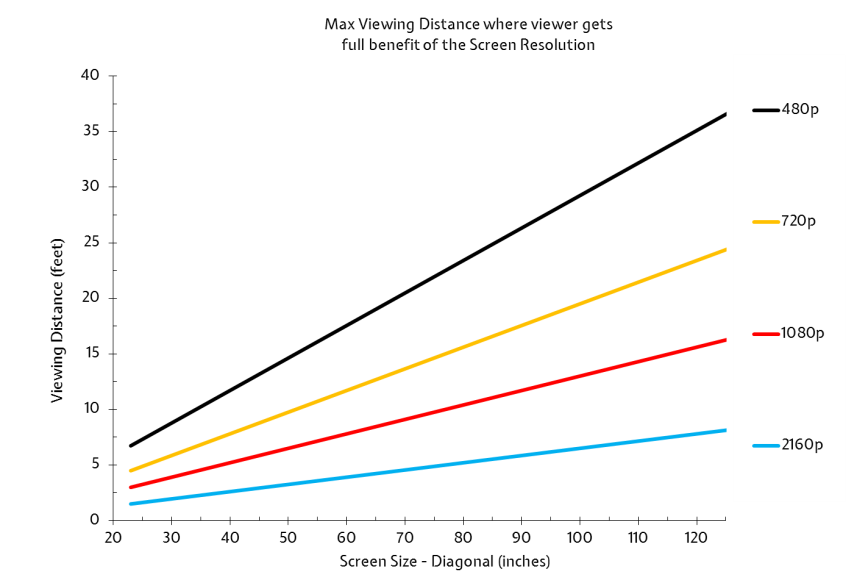Ultra HD looks great on the stands and in the shops but the dimensions of the living room are likely to mean that it will fail.
- It is the all the rage and I have to admit that when I saw it for real, I was impressed.
- However, what I failed to notice was that the seat, from which I was to marvel at this new wonder, was less than 6 feet away from the massive 85” screen.
- The problem is that with each successive jump in resolution, one has to sit closer and closer to the screen in order to be able to appreciate the difference.
- With 4K or Ultra HD (which is 2160p) the maximum distance at which one can appreciate the difference is so small that in the vast majority of living rooms, and critically review rooms, the sofa will be too far away from the screen to be able to appreciate the difference between 1080p and 2160p.
- It is totally counterintuitive but I have tested it and it appears to be true.
- The chart below shows that maximum distance that you can sit from the screen in order to tell the difference between different movie resolutions depending on what sized screen you have.
Source: Carltonbale.com
- As the screen size increases so does the maximum distance from which you can tell the difference but not nearly fast enough.
- The other problem is that, the bigger the screen size, the further one tends to sit away from the screen as one’s living room tends to be bigger.
- I have tested this on my 58” plasma TV where I sit about 11 feet away and I struggle to tell the difference between 720p and 1080p but the difference between DVD and 720p is as clear as day.
- My dimensions put me above the 1080p line but below the 720p line.
- In my living room, I would to have a television greater than 130” in order to be able to appreciate 2160p.
- My living room can not accommodate a television of that size and one can quickly see how a 2160p television can never be big enough to really deliver the “wonders” of 4K.
- I suspect that my living room is typical of many around the world meaning that virtually no-one is going to appreciate the difference.
- Hence, no one will be willing to pay a premium for either TV sets or the content meaning that vast sums are likely to be lost by those dashing headlong into this space.
- This is yet another classic case of engineering disease where engineers were so consumed by making the technology that they never bothered to ask whether anyone would want it.
- I am not surprised to find the Japanese companies at the forefront of this latest push.
- While they may see an initial bounce in demand as the technophiles pick it up, its all likely to horribly wrong again when the average consumer doesn’t care because he can’t see an improvement worth paying for.









